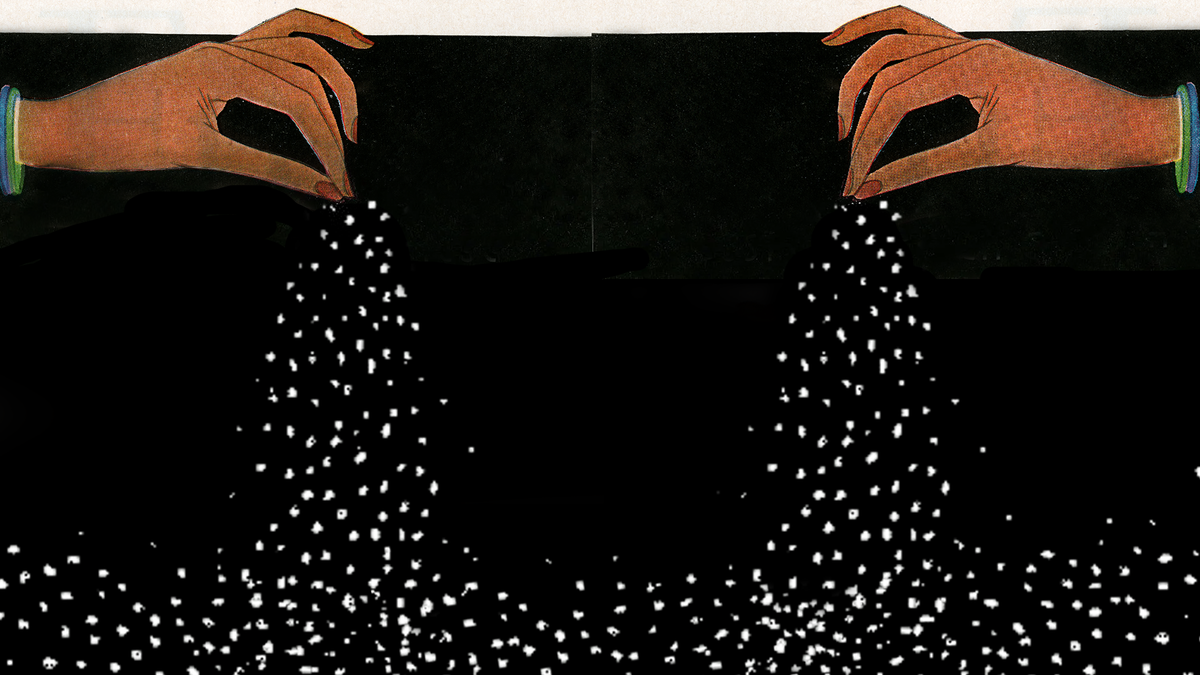
Electrolytes are having a moment. If you head to your local grocery store or vitamin shop, you’ll find rows of electrolyte-infused powders, tablets, and beverages that claim to rehydrate you quickly and effectively.
There is one product, in particular, that many athletes are testing out: salt pills. The tiny white tablets, which contain a concentrated amount of sodium chloride, have exploded in popularity on TikTok, with many people swearing the pills have taken their athletic performance to the next level.
I called up two sports dietitians who work with endurance athletes and asked them what they really think about salt pills. They were in agreement: the average athlete shouldn’t bother messing with them.
“Most people who exercise do not need salt pills; however, for endurance athletes and people who exercise in hot environments or at very high-intensity levels, salt tablets could be useful,” says Allison Childress, a registered dietitian and associate professor in the Department of Nutritional Sciences at Texas Tech University.
What’s the Hype with Salt Pills?
Perspiring during vigorous exercise causes you to lose a lot of fluids and electrolytes, including sodium, potassium, and calcium. If you don’t replace those lost electrolytes, you can become dehydrated.
Without enough fluids in your body, you can expect your muscle function, athletic performance, and cognition to take a hit. “You’re eventually going to have to slow down or stop exercising,” says Jena Brown, a sports dietitian for endurance athletes and owner of the nutrition coaching service Victorem Performance Nutrition.
If you drink too much water or only drink water, says Childress, during prolonged exercise—four hours or more (for example, marathons or Ironman distance triathlons), you can wind up with a serious condition called exercise-induced hyponatremia. This electrolyte imbalance occurs when you have too-low sodium levels in your blood as the excess water dilutes salt concentration. This can trigger cramping, fatigue, confusion, and low blood pressure, according to the National Kidney Foundation.
“A lot of athletes perceive salt tablets as a safety net that’ll protect them from hyponatremia,” says Childress. The allure is obvious: salt pills, in theory, offer athletes a quick solution when they’re on the go. But can a tiny pill actually keep you quenched during and after lengthy workouts?
Figuring Out How Many Salt Pills to Take in a Day
Knowing how many salt pills to take—and when to have them—is a delicate dance. Even if, say, you and your buddy are backpacking along the same exact route, the amount of electrolytes you should ingest may vary, potentially significantly, from the amount your friend requires, Brown says. Your rehydration needs largely depend on how much you sweat (and how much sodium is in your sweat) because some people expel more salt than others.
The only way to know, for sure, how much sodium chloride you need after a tough day on the trail is to conduct a sweat test to measure your sweat rate and composition. “If an athlete knows how much sodium they lose, they can replace it to the T,” Childress says.
Sodium concentration, or the amount of sodium in your sweat, varies widely from person to person, says Childress, but, on average, people lose about 1 gram or 1,000 milligrams (mg) of sodium per liter of sweat. So, if you sweat out a liter of fluids—and therefore about 1,000 mg of sodium—you’d want to take a salt pill that has 1,000 mg of sodium during (or right after) your workout to replenish the lost salt, Childress explains.
If you’re looking for a sweat test to determine salt loss, get in touch with a sports dietitian. They can measure how much fluid you lose during exercise and calculate your sweat electrolyte concentration. That way, you won’t have to guess what you need to ingest to stay hydrated. If you want to figure out how much sweat you lose, a sweat rate test is helpful; this entails weighing yourself on a bathroom scale before and after an intense workout. (Read here about how to do one at home.)
Yes. It Is Possible to Take Too Many Salt Pills.
Here’s the issue: most people wing it. Because they’re unlikely to know how much sodium they lose in their sweat, they’ll pop a few salt pills, hoping to rehydrate. But taking too many (salt pills often come in a 200- to 400-milligram dose) can wreak havoc on your body. “The downside is you can overdose on them pretty easily if you don’t know what you’re doing,” Childress says. When that happens, you can develop hypernatremia, a condition where there’s too much sodium in the blood, which causes excessive thirst, nausea, confusion, muscle weakness, and dizziness.
Hypernatremia and hyponatremia can feel and look similar—so some people may develop weakness and assume they’re dehydrated when, in actuality, their sodium levels are way too high. Then, they’ll take even more salt pills and exacerbate the issue. In very extreme cases, this can cause people to collapse or have a seizure.
You Don’t Need Salt Pills—Hydrate This Way Instead
Athletes have to be careful about how many salt tablets they take, Childress says. Not only are salt pills unnecessary for athletes, but they’re also potentially dangerous.
However, if you’re still set on taking salt pills, start with a low dose, says Childress, and make sure you drink enough water with them. “You’re not going to have any hydration benefit if you’re taking salt pills and not drinking fluid. They go together,” Brown says.
If you don’t think salt pills are worth the hype, you can skip them altogether. Brown recommends drinking 16 ounces of fluid per hour that you’re working out. If you’re a super sweater, you may want to up that to (at most) 1 liter per hour, she adds.
An easy way to check your hydration levels is by evaluating your urine. If your pee is dark or you’re going to the bathroom less frequently than usual, you should increase your fluid intake. Clear pee suggests you’re over-hydrated and could use some electrolytes, Brown says. The goal is for your pee to look like light lemonade, she says.
Opt for a Salty Snack or a Piece of Fruit
For those exercising at least three hours or in hot conditions, alternate between drinking water and sports drinks to keep your electrolytes in balance, Childress says. You can also munch on water-rich fruits and vegetables like watermelon, cantaloupe, celery, or broccoli.
To restore your sodium levels, instead of a salt pill, throw in something more satisfying, like a bag of pretzels or salted nuts, spread cheese on a few crackers, or grab some chips, she says.
If you, like me, don’t keep track of your sweat or water consumption, then simply drink to thirst, suggests Childress. Finally, if you want to nail your hydration game, your best bet is to talk to a sports dietitian. She explains, “It’s really worth the money and time to meet with a professional who can run the sweat tests and design an individualized hydration strategy.”




